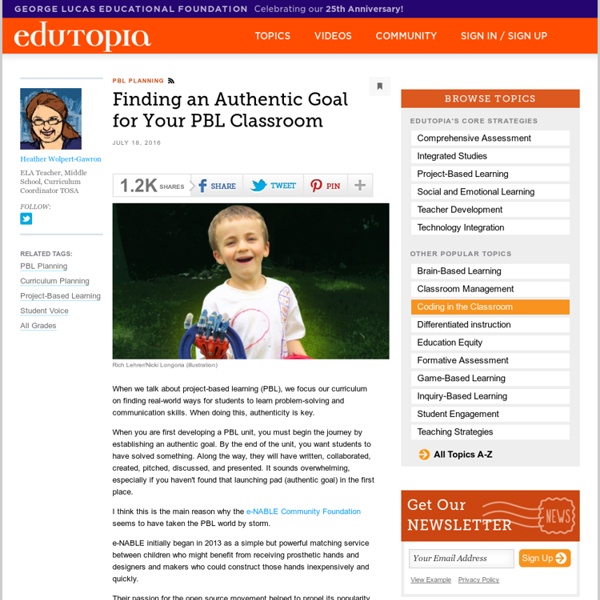Finding an Authentic Goal for Your PBL Classroom

PBL: What Does It Take for a Project to Be "Authentic"?
Everyone thinks that Project-Based Learning has something to do with "authentic" learning. But not everyone agrees what this means. Take this quick quiz. Which of the following projects could be called authentic? a) Students learn about endangered species in their region and take action to protect them, including a public awareness campaign, habitat restoration fieldwork and communication with local government officials. b) Students design and create a calendar with pictures and information about endangered species, which they sell at a pre-winter break community event and donate the money to an environmental organization. c) Students play the role of scientists who need to make recommendations to an environmental organization about how to protect endangered species in various ecosystems around the world. To authenticity purists, a project is not really authentic unless it is in the real world, connected directly to the lives of students and real issues in their communities. Not Authentic
Wonderopolis | Where the Wonders of Learning Never Cease | Wonderopolis
blinkx Video
Sweet Search
Penultimate
Using Google Tools in Project-Based Learning Infographic
Teacher Infographics Using Google Tools in Project-Based Learning Infographic Using Google Tools in Project-Based Learning Infographic Project-based learning is a dynamic approach in which students actively explore real-world problems and challenges and acquire a deeper knowledge. Many of the digital tools used in classrooms are made especially for education. Inquiry Tools Once you’ve decided what the students will be focusing on, they’ll need more information on the topic. Communication and Collaboration Tools As a part of their work, students will likely need to connect with others – with collaborators in the classroom and with folks around the globe that can help them learn about what they need to know. Expression Tools An integral part of project-based learning is students having a voice in their work. Tools for Sharing, Presenting, Feedback, and Assessment Project-based learning encourages sharing work and receiving feedback that is more meaningful than just a grade. Via: dailygenius.com
Related:
Related:



